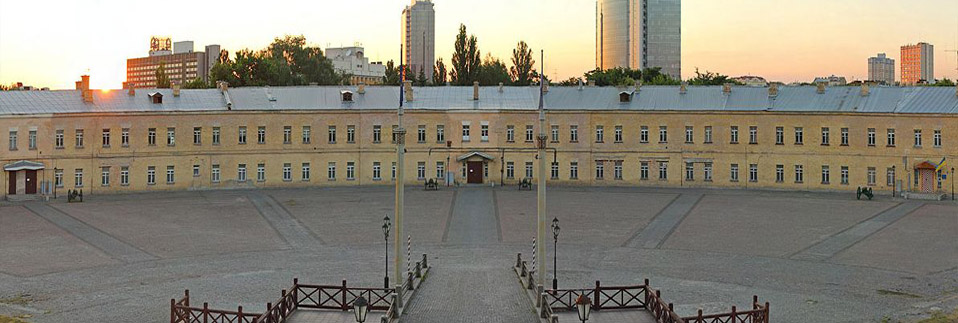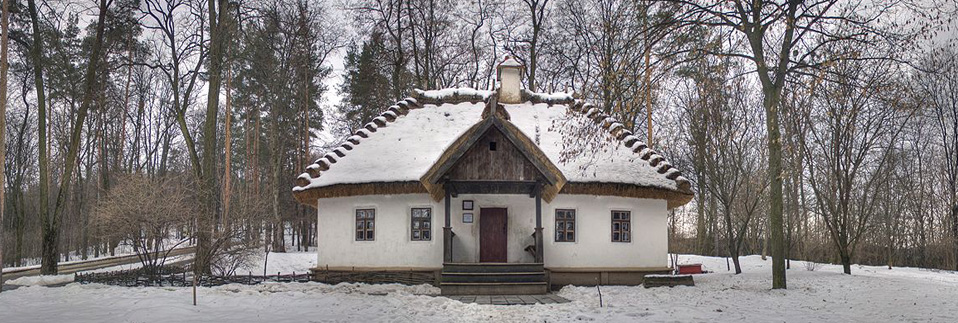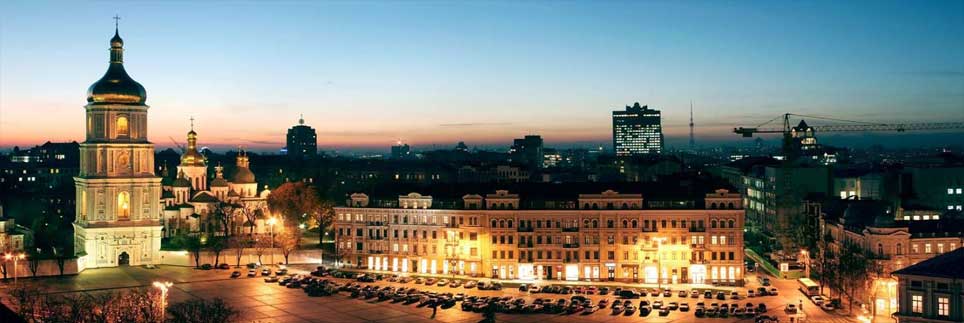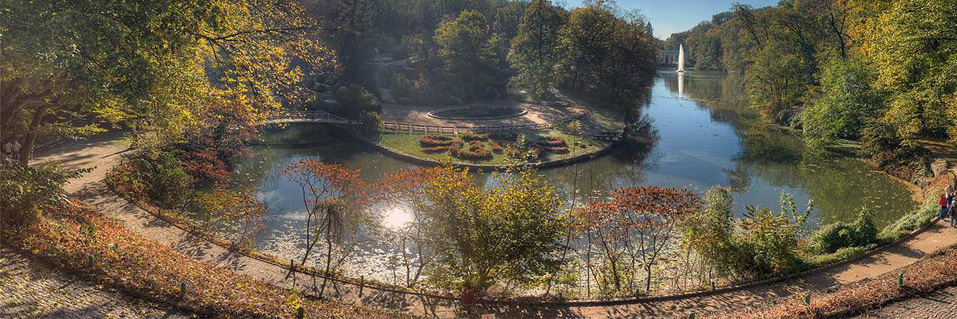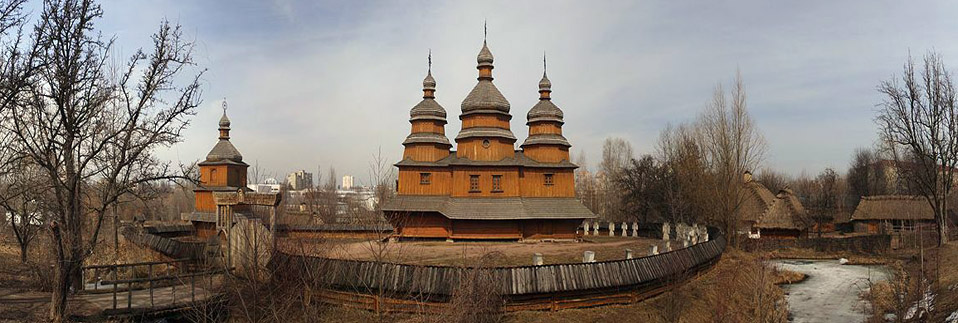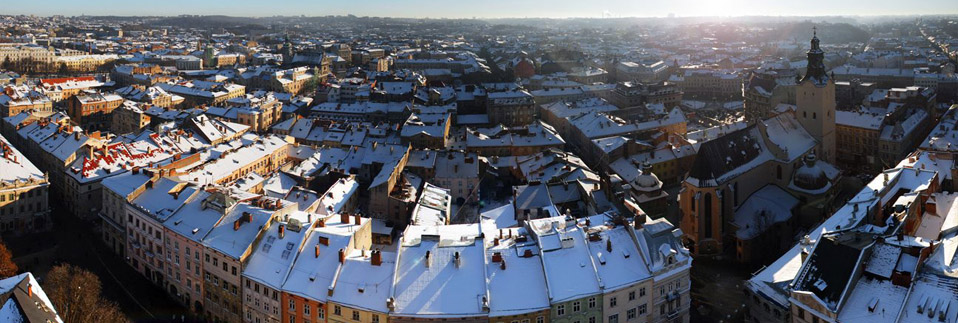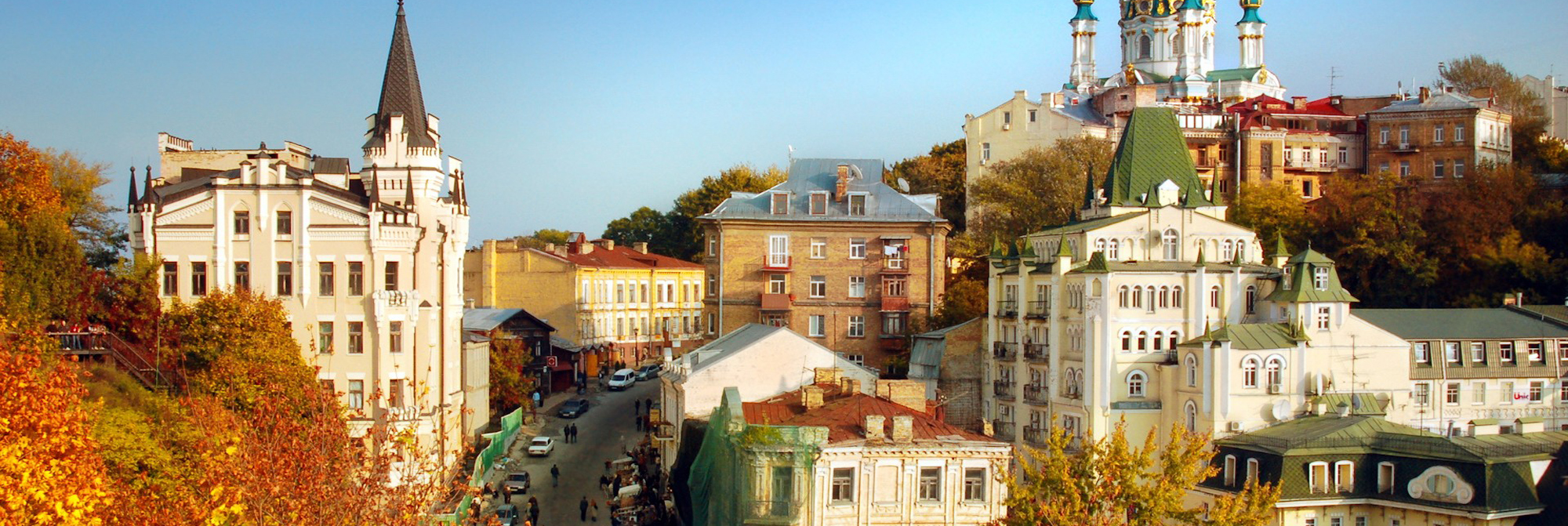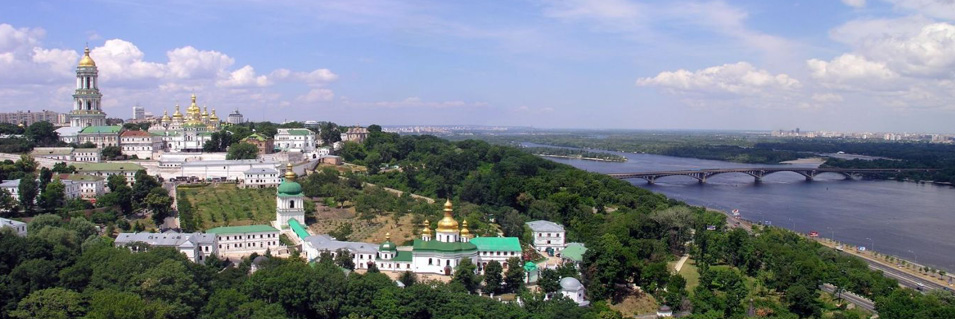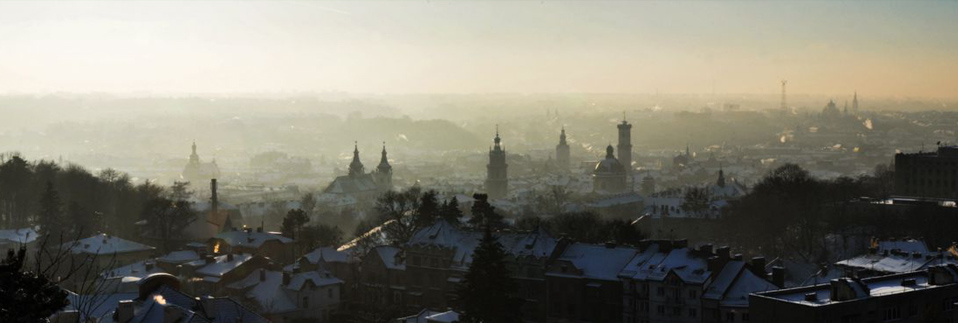Crimea
Crimea Region
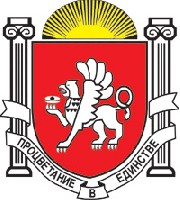
 Crimea has long been recognized as one of the world's wonders of nature and the most exotic place on the earth and with good reason, This strange peninsular looks absolutely nothing like the rest of Ukraine. Instead of rolling wheat fields, the landscape is broken into deep canyons and jutting cliffs, Sharp mountains seem to pop up from nowhere and straying from the road the noise of passing cars quickly turns to the roar of falling water, Here the hillsides are covered with a different kind of greenery and the warm breeze feels unmistakably Mediterranean, The sun shines unclouded year round attracting armies of tourists. The region's main appeal is its natural diversity and constant change of scenery. The peninsula has mountains, ancient volcanoes and plains, forests and the steppe and a subtropical belt of luxuriant vegetation, There are 6 national parks and natural preserves. The main curative factor in Crimea is a unique combination of mountain air, evergreen vegetation and sea. No less exotic is the human element, Behind the neon glitz of the tourist traps are the left-overs of fallen empires, that once claimed to these seaports'. Byzantine cave cities, Greek ruins, Russian palaces, Genoese castles, and the Soviet battleships. With the wild rock-faces and poetic Turkish names, it is not surprising that so many legends are attached to Crimea.
Crimea has long been recognized as one of the world's wonders of nature and the most exotic place on the earth and with good reason, This strange peninsular looks absolutely nothing like the rest of Ukraine. Instead of rolling wheat fields, the landscape is broken into deep canyons and jutting cliffs, Sharp mountains seem to pop up from nowhere and straying from the road the noise of passing cars quickly turns to the roar of falling water, Here the hillsides are covered with a different kind of greenery and the warm breeze feels unmistakably Mediterranean, The sun shines unclouded year round attracting armies of tourists. The region's main appeal is its natural diversity and constant change of scenery. The peninsula has mountains, ancient volcanoes and plains, forests and the steppe and a subtropical belt of luxuriant vegetation, There are 6 national parks and natural preserves. The main curative factor in Crimea is a unique combination of mountain air, evergreen vegetation and sea. No less exotic is the human element, Behind the neon glitz of the tourist traps are the left-overs of fallen empires, that once claimed to these seaports'. Byzantine cave cities, Greek ruins, Russian palaces, Genoese castles, and the Soviet battleships. With the wild rock-faces and poetic Turkish names, it is not surprising that so many legends are attached to Crimea.
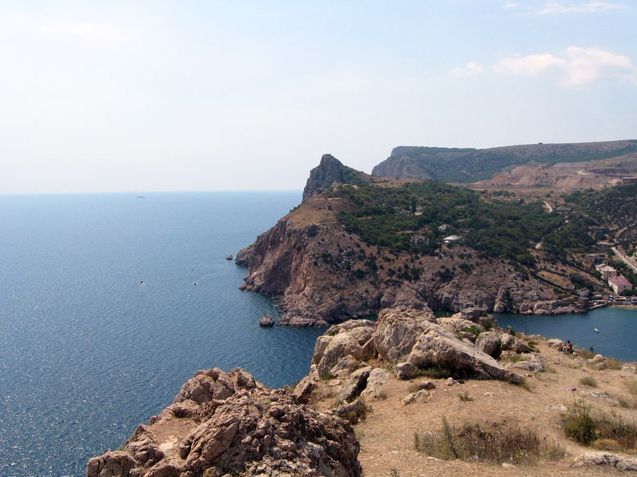
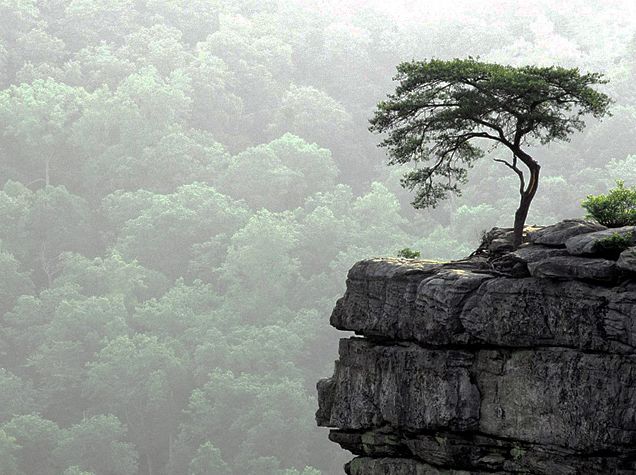
The Southern coast of Crimea. This narrow strip of land between the Black Sea and the jagged ridge of the Crimean Mountain chain has the warmest weather in Ukraine and is consequently mobbed from May to September, The natural attractions are worthy of such attention: the mountain landscapes are simply stunning. The "Ukrainian Riviera" actually does have a Mediterranean climate complete with aromatic shrubs, sunshine and dry air, but any comparisons fall short of describing the very unique world of the Crimean shore.
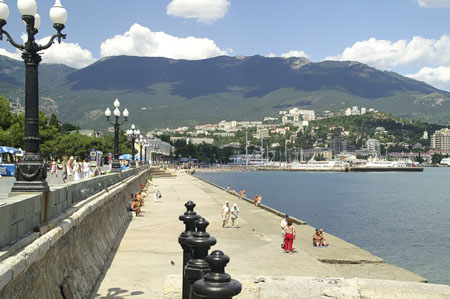 Most of the tourists head for Yalta - the loveliest and most happening resort on the Southern Coast. The town is rather compact nestled as it is in a coastal alcove at the foot of mountains. It is this shielding that gives the resort its unique microclimate with guaranteed sunshine you'd expect to find in the tropics. The sweeping mountain-view against the open sea is truly spectacular.
Most of the tourists head for Yalta - the loveliest and most happening resort on the Southern Coast. The town is rather compact nestled as it is in a coastal alcove at the foot of mountains. It is this shielding that gives the resort its unique microclimate with guaranteed sunshine you'd expect to find in the tropics. The sweeping mountain-view against the open sea is truly spectacular.
There are some real attractions in Yalta: Alexander Nevsky Cathedral with brand new gold domes and display of original mosaics, the Chekhov House and Museum that once was the private "white dacha" of the author and playwriter Anton Chekhov who came often to Yalta to work and where he wrote a great deal of his short stories, as well as plays The Cherry Orchard, Three Sisters, The Lady with Lap Dog.
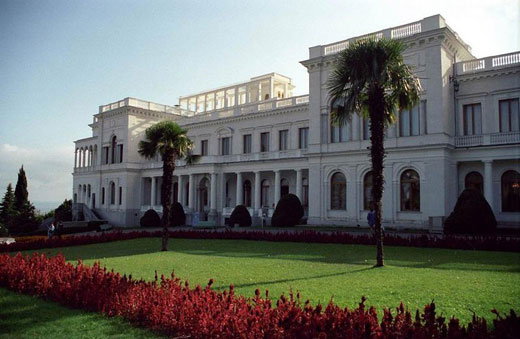 Livadia Palace was built in 1911 for Nicholas II as his family summer residence. The white renaissance mansion is surrounded by a simple but vast garden overlooking the sea. The Romanov's spent only four summers there before their arrest and a small church behind the palace is now a shrine to their memory. The palace became world famous for hosting the "Big Three" Conference in February 1945 when the allied leaders met in Livadia to finalize the post-war plans. The Yalta Conference took place in the largest hall and it is here that Stalin, Churchill and Roosevelt discussed the fate of Germany and adopted the "Declaration on Liberated Europe". These days the second floor is devoted to Romanov's family and downstairs area to the Conference. Photos show Churchill, Roosevelt and Stalin at work and relaxing together.
Livadia Palace was built in 1911 for Nicholas II as his family summer residence. The white renaissance mansion is surrounded by a simple but vast garden overlooking the sea. The Romanov's spent only four summers there before their arrest and a small church behind the palace is now a shrine to their memory. The palace became world famous for hosting the "Big Three" Conference in February 1945 when the allied leaders met in Livadia to finalize the post-war plans. The Yalta Conference took place in the largest hall and it is here that Stalin, Churchill and Roosevelt discussed the fate of Germany and adopted the "Declaration on Liberated Europe". These days the second floor is devoted to Romanov's family and downstairs area to the Conference. Photos show Churchill, Roosevelt and Stalin at work and relaxing together.
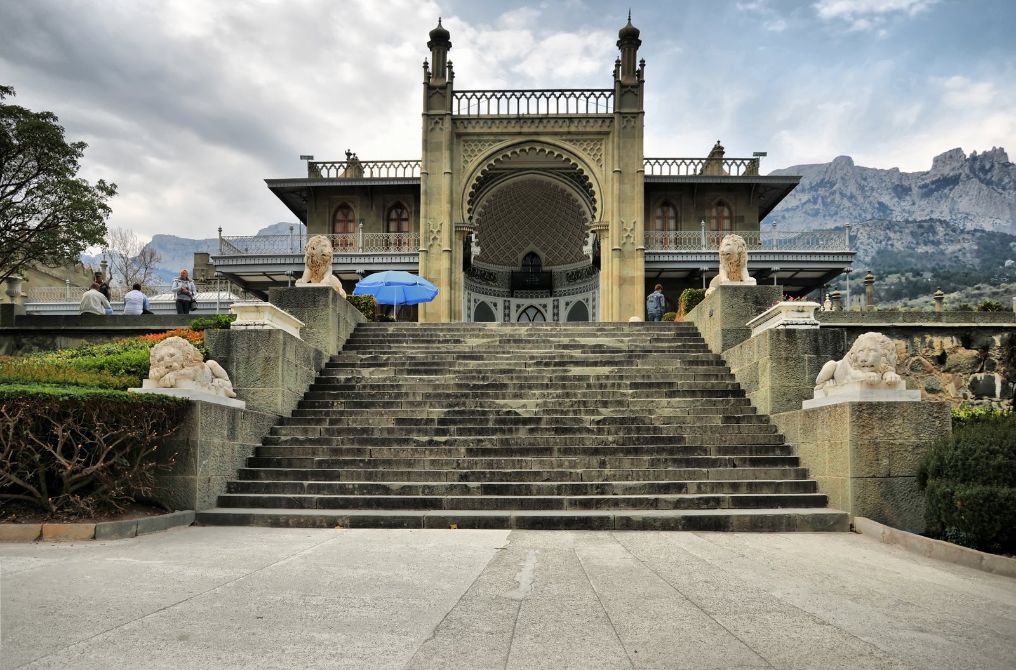 Aluopka Palace - the former estate of the regional governor count Mikhail Vorontsov is a surprising mix of British and Arabic styles and is remarkable for its sheer extravagance. No wonder that during the Yalta Conference it was turned into the official residence of the Prime Minister of Grean Britain Sir Whinston Churchill. The palace also boasts an exquisite garden open to the public all year round.
Aluopka Palace - the former estate of the regional governor count Mikhail Vorontsov is a surprising mix of British and Arabic styles and is remarkable for its sheer extravagance. No wonder that during the Yalta Conference it was turned into the official residence of the Prime Minister of Grean Britain Sir Whinston Churchill. The palace also boasts an exquisite garden open to the public all year round.
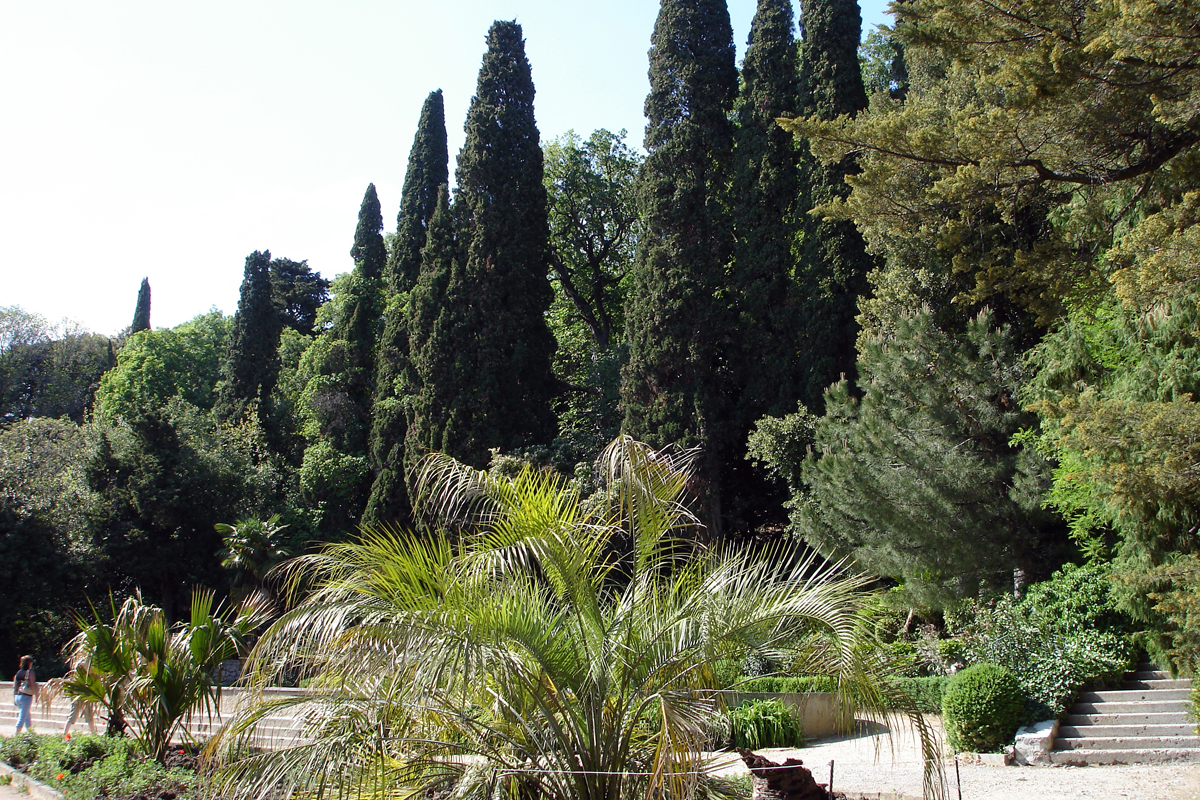
Founded in 1812 Nikitsky Botanical Gardens were designed to house every conceivable strain of plant life sustainable in this part of the world. Twenty-eight thousand plant species are growing in the park. The park has shifted from its original agricultural goals to new aesthetic heights, with stunning flora displays and incredible tree exhibits of sequoia and cedars of Lebanon.
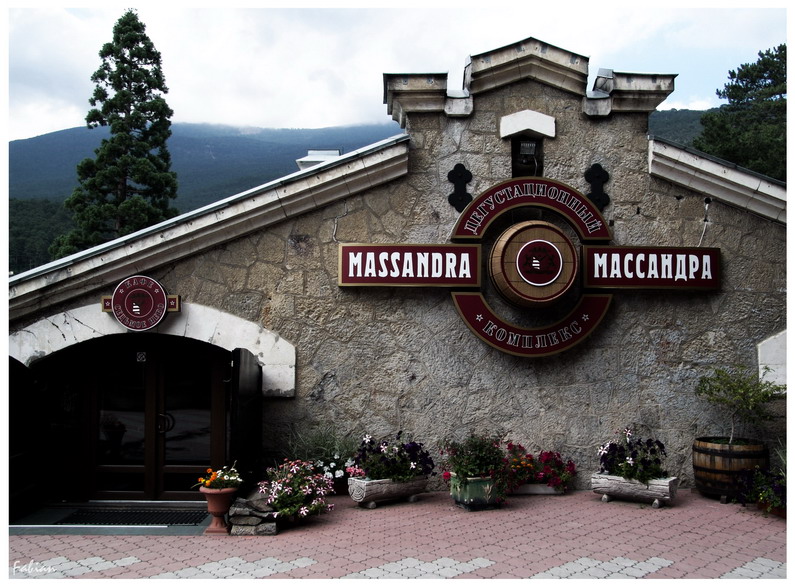 As Crimea has been a wine centre for millennia, the big daddy of the Crimean winemaking industry is indisputably Massandra. At Massandra they offer impressively professional tours. Consequently, a ten-glass tasting can turn out to be a rather jolly event. Just watch out for the Madeira!
As Crimea has been a wine centre for millennia, the big daddy of the Crimean winemaking industry is indisputably Massandra. At Massandra they offer impressively professional tours. Consequently, a ten-glass tasting can turn out to be a rather jolly event. Just watch out for the Madeira!
The old road from Yalta across to Sevastopol winds through the mountains, passing by numerous ice-cold natural highland springs, cliff-side St. Resurrection Church and idyllic viewing stations.
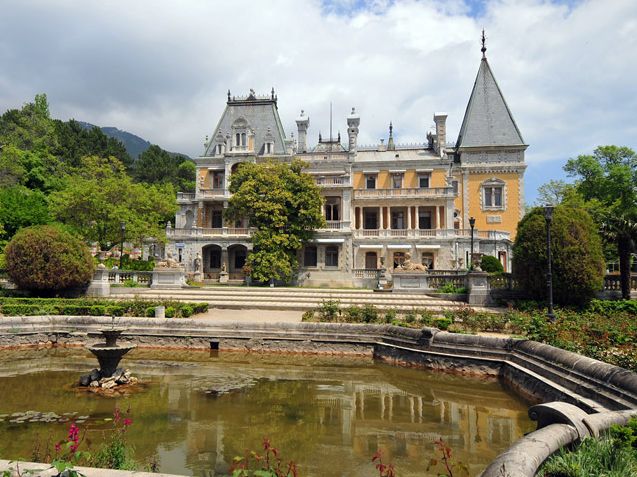
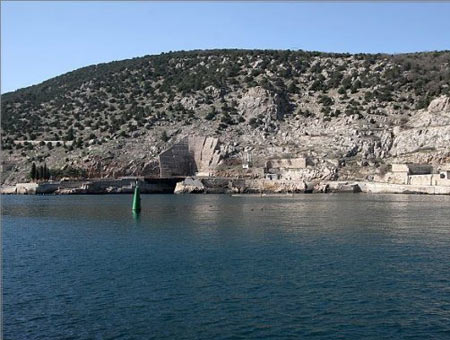 Balaclava. Just before Sevastopol you come to Balaclava, the town, where British fleet was stationed during the Crimean War. The Royal Navy was over-enthusiastic with the number of ships it harboured here, and in November 1854 a vicious winter storm sank a good portion of the naval force, including the prized "Black Prince". The legendary Battle of Balaclava was fought in the valleys above the entrance to the town. This was a surprise attack by Russians who took the Turkish cannons and were then charged by the doomed Light Brigade. Just outside of the town is the monument at the site if the tragic charge of the Light Brigade, which was immortalized in Tennysons's poem.
Balaclava. Just before Sevastopol you come to Balaclava, the town, where British fleet was stationed during the Crimean War. The Royal Navy was over-enthusiastic with the number of ships it harboured here, and in November 1854 a vicious winter storm sank a good portion of the naval force, including the prized "Black Prince". The legendary Battle of Balaclava was fought in the valleys above the entrance to the town. This was a surprise attack by Russians who took the Turkish cannons and were then charged by the doomed Light Brigade. Just outside of the town is the monument at the site if the tragic charge of the Light Brigade, which was immortalized in Tennysons's poem.
Curving sharply from the sea, the back of the cove dips into an underwater cave before opening up into an underground "harbour", a phenomenon that inspired the spot's Turkish name (Balaclava means "Fish Nest") and later brought the Soviets, who built a secret, nuclear submarine repair station inside the cave, completely hidden from prying American satellites.

On top of the pyramid-shaped mound is the remainig tower and ruins of the Genoese Fortress. Its just the very place where Florence Nightingale set up the hospital.
Sevastopol. This famous port city is best known to be unknown. Sevastopol was a "closed city" until the late 1990s, when hyper security around the military was relaxed.
Sevastopol has a personal sense of chic unrivalled by any other city, All day, single-file lines of shot-haired sailors, march back and forth in their ironed uniforms and shiny buckles, Military primness with a smile seems to be the unwritten city code.
For military history buffs Crimea is a must for of the chance to see Sevastopol - home to the Black Sea fleet. Head to the "Panorama" first. The round monument houses the gigantic 360 degrees canvas depicting the siege during the Crimean War and life-size model recreating the fated day of the Battle of Sevastopol fought on June 6, 1855. It really is an impressive display, The museum downstairs shows left-over artifacts from the Crimean War such as cannonballs and uniforms.
In stark contrast to Sevastopol's Soviet style are the nearby ancient ruins of Chersonessus, which dates back to the Greek settlements of over two thousand years ago. The ancient site and architectural treasure still stands as the largest Greek ruins and as a testament to the depth of heritage of Crimea, This is also the spot where Prince Volodymyr was baptized. Nearby there is St. Volodymyr Cathedral, built to commemorate the events in 19th century.
 Most people stop in Bakchisarai to meet the Crimean Tartars, which is a worthwhile goal for this area. This small country town was once the eminent capital of the Crimean Khanate that had settled its state around it. At the height of the Crimean Khanate, there were 32 mosques in Bakhchissarai - of which most were destroyed during the Russian occupation in 1783, Catherine the Great did spare the palace, supposedly for its romantic appeal.
Most people stop in Bakchisarai to meet the Crimean Tartars, which is a worthwhile goal for this area. This small country town was once the eminent capital of the Crimean Khanate that had settled its state around it. At the height of the Crimean Khanate, there were 32 mosques in Bakhchissarai - of which most were destroyed during the Russian occupation in 1783, Catherine the Great did spare the palace, supposedly for its romantic appeal.
Today, Bakhchissarai is resurrected ghost town. Its newest inhabitants have lived most of their life in an exile and are slowly rebuilding their city.
The Khans Palace. Pictures of this building are in every tourist brochure and it's high-domed ;.- mosque is the symbol for Crimea's oriental image. Here the Crimean r' khans once held court and sizable harem. The entire complex is a protected historic site that functions as a series of museums. A guided walking tour gives you good idea of what life was like for the khanate royalty.
The complex also features many other buildings and courtyards: the Divan Chamber - the literal seat of government; Small Mosque that has remained its original condition of frescoes with scenes of men, animals and flowers; the Summer House - the latest addition to the palace; the Harem - the only one house remaining out of four that belonged to the khan's wives, and the Fountain Yard including the famous Fountain of Tears. In the corner of the Fountain Yard stands a small marble fountain with a wistful history. Khan Gerey has deeply fallen in love with the Polish girl who was added to his harem as a war prize. But alas, his love remained unrequited, Unable to cope with harem life, the girl died after one year. The khan was grief-stricken and cried day and night for years afterwards. His courtesans ordered the fountain be made that would "contain" the khan's endless jS heartache. Water is carried from shelf to shelf tumbling out periodically like the overflowing tears of a grief remembered. The Sufi design brings the water to the bottom of the fountain where it trickles into the spiral, the symbol of the eternity. The fountain can still be viewed with drops like tears descending pool by pool to the base. After visiting the palace the romantic poet Pushkin was inspired by the khan's tragic love story and penned the famous poem "The Bakhchisarai Fountain", The popularity of the poem kept the place from being destroyed.
The Holy Assumption Monastery. This tiny and very ancient church is built inside a cave so that its small windows appear naturally set into the face of the steep cliffside from which it hangs. The monastery claims to be the oldest in Crimea, started in the 8th century by Byzantine mystics.
They followed the natural contours of the cliff to construct a series of chapels and cells inside the rock. The monastery is fast becoming an important pilgrimage site, not least for its holy fountain that brings health and blessing to those who drink from it.
From the monastery it is one kilometer across and up to the incredible cave town Chufut Kale. It was here that the Crimean Tartar Khanate built its second capital in the 15th century (the first one was in Stary Krym), "The Fortress of Jews" is another name for this medieval ruined town that perches high on the plateau. It is one of the most-visited of Crimea's 16 cave cities. The nations that passed through Crimea all left population in this city, including the Armenians and the Karaites who according to one of the scientific hypothesis were descendants from the Khazar Khanate.
The streets are still intact and the ruins make for interesting exploring, The 14th century Karaite Kenassa is next to the southern entrance and there are countless homes hewn out of the rock.


